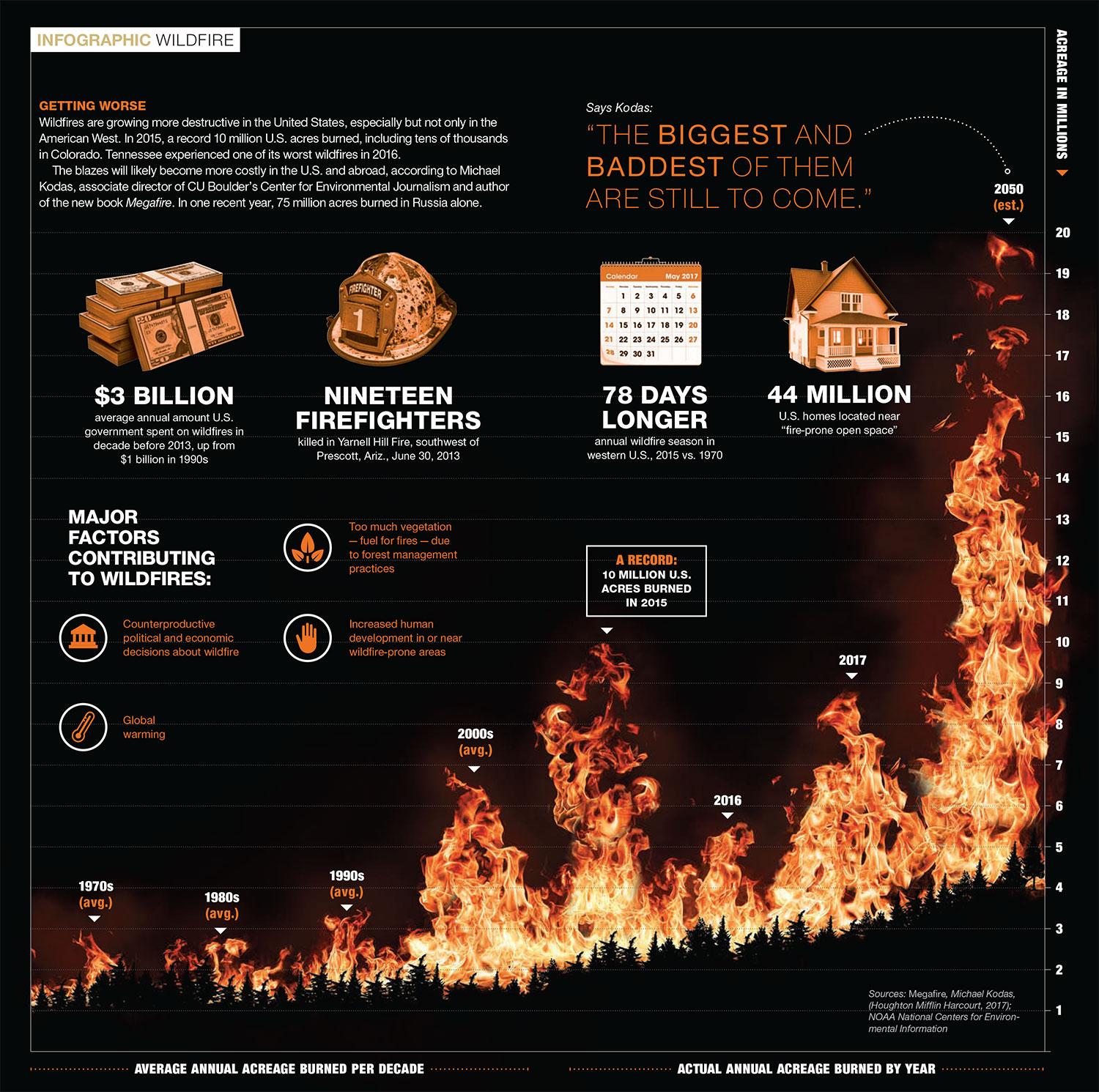
Infographic: Wildfire

Getting Worse
Wildfires are growing more destructive in the United States, especially but not only in the American West. In 2015, a record 10 million U.S. acres burned, including tens of thousands in Colorado. Tennessee experienced one of its worst wildfires in 2016.
The blazes will likely become more costly in the U.S. and abroad, according to Michael Kodas, associate director of CU Boulder’s Center for Environmental Journalism and author of the new book Megafire. In one recent year, 75 million acres burned in Russia alone.
- $3 billion
average annual amount U.S. governement spent on wildfires in decade before 2013, up from $1 billion in 1990s. - 19 firefighters
killed in Yarnell Hill Fire, southwest of Prescott, Ariz., June 30, 2013 - 78 days longer
annual wilfire season in western U.S., 2015 vs. 1970 - 44 million
U.S. homes located near "fire-prone open space"
“The biggest and baddest of them are still to come.” — Michael Kodas
Major Factors Contributing to Wildfires:
- Counterproductive political and economic decisions about wildfire
- Global warming
- Too much vegetaion — fuel for fires — due to forest management practices
- Increased human development in or near wildfire-prone areas
Sources: Megafire, Michael Kodas, (Houghton Mifflin Harcourt, 2017); NOAA National Centers for Environmental Information

